Milan is a working city, known in the rest of the country for being hectic and modern but in spite of its obvious vocation it can reveal a lot more to anyone who is willing to develop a deeper knowledge. The center of the city is of course the area that hides most of the historical layers which can date even back to the Roman time but in this article we want to make a couple of centuries jump.
The story we want to talk about is located at the San Lorenzo Columns, a few hundreds meters from the Duomo, which is an area that in the period were we are placing this anecdote (first half of the 1600) was a low class neighborhood full of poor housing, mills and factories. Close by where now you can find a nice little park, in 1630 there use to be a location that was designated for the public executions that had a double functions: on one side they were a kind of morbid and cruel form of entertainment and on the other side it was a deterrent that infringed fear into the ignorant population.
One of the obsessions for Italians students for several generations, I Promessi Sposi (The Betrothed if anybody wants to share the experience) was first published in 1827. The novel is set in northern Italy in 1628 and it’s famous for its extraordinary description of the plague that struck Milan in 1630.
While the author Alessandro Manzoni, one of the famous Italian writers of all time, was doing the historical research for his novel, he came across the original documents describing the trial of Gian Giacomo Mora, a barber accused of deliberately spreading the disease around the city of Milan. Manzoni, was very impressed by the story of the poor barber and first thought to include it in the novel but then decided to put it in a separate book entitled “The Infamous Column”, published e few years later.
The count of the victims of the disease brought in the city by the Landsknechts, German mercenaries passing through Lombardy in 1629, was every day more dramatic to the point of reaching 200 deaths per day. The population, desperate of the miserable living conditions, the famine and constant fear, were searching for scapegoats, something that could free them from their terror.
While Cardinal Federico Borromeo began to organize town processions to invoke God’s help against the scourge, among the people began to spread the rumour about the presence of suspicious characters who were greasing with mysterious concoctions the city walls and doors.
Those processions instead of preventing the disease caused its spread: people rushing to gather together were fatally exposed to the contagion.
For a series of casualties well described in the Manzoni’s novel, poor Gian Giacomo Mora was accused of being an UNTORE (an infector), one of those characters that was spreading the disease and once arrested he underwent the treatment used to extort confessions at the time. After nearly a month of torture, the barber confessed to what he did not commit, just to end his torment.
They broke all his bones and chopped of his right hand, then they put him on a wooden wheel and left him in the execution square for six hours so that everybody could enjoy his agony. When he finally passed away his body was burned and the ashes thrown in the nearby river.
His house was razed to the ground with the prohibition to anybody to rebuild anything on that soil for the rest of time.
They also erected a column with a stone ball on top and placed a marble plaque engraved in seventeenth-century Latin briefly telling the story of the terrible enemy and warning passersby to stay away from those damned places.
This column was removed at the end of 1700 on order of Maria Teresa d’Austria who by the way forbade torture as an interrogation method and new houses were built in spite of the ban. Nowadays the street has the barber’s name and the city preserves the marble plaque with the memory of this horrible story in one of its more prestigious locations, the Sforza Castle(see photos above). If you visit Milan and go to the il Cortile della Rocchetta, right beside the elephant fresco, check out the story of the innocent barber who has been the victim of people’s ignorance and the powerful arrogance.
[socialWarfare]

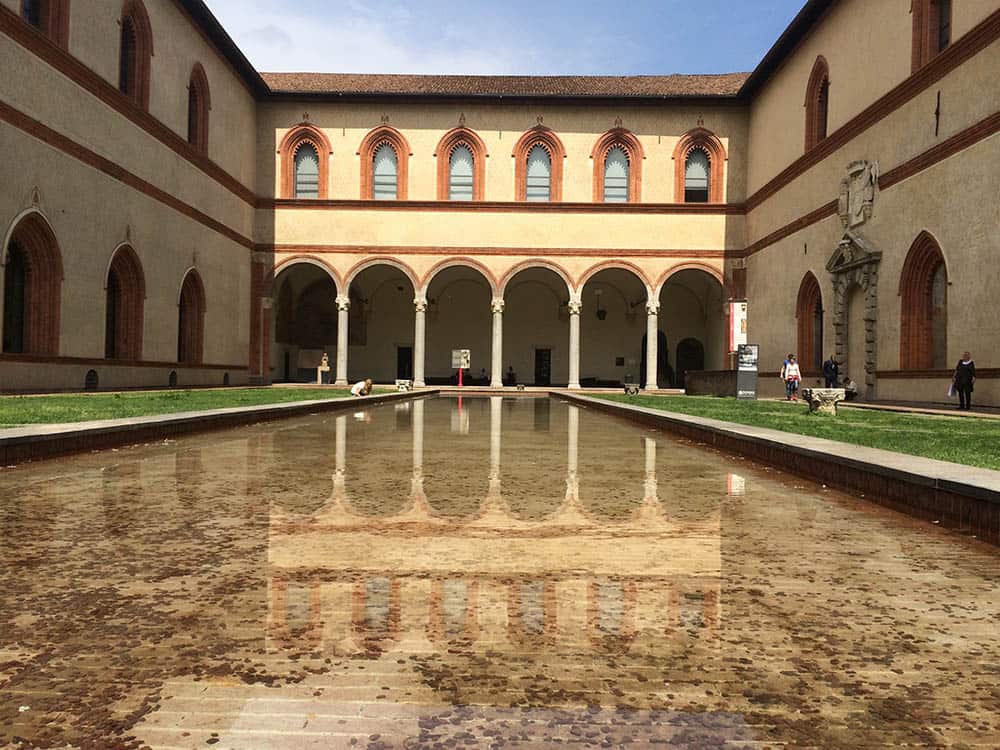
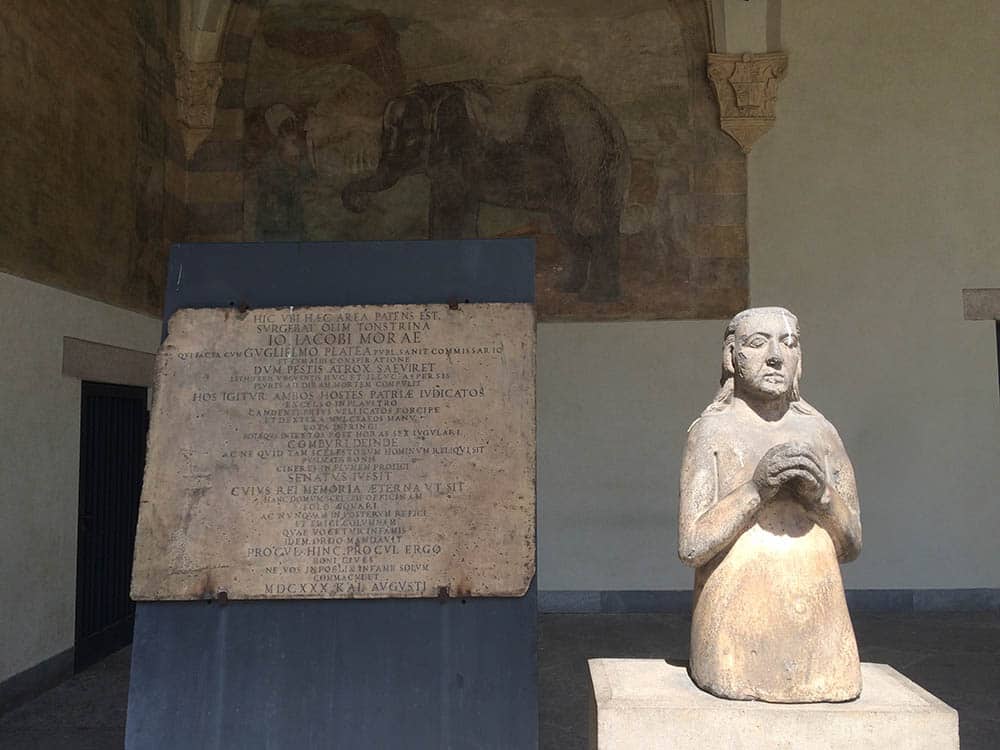
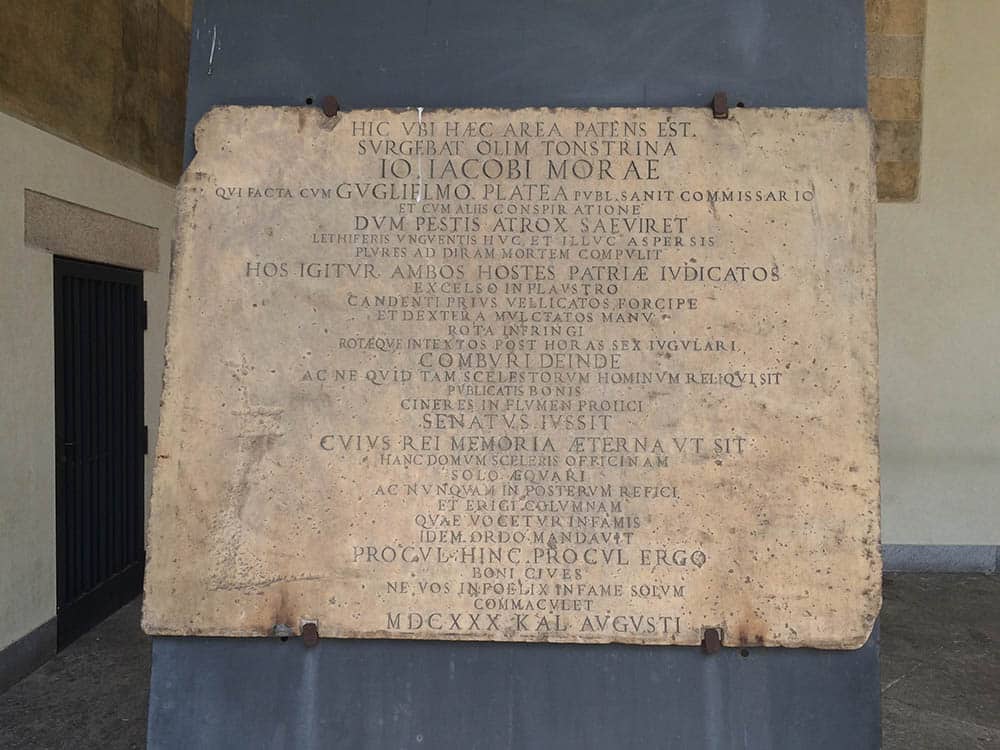
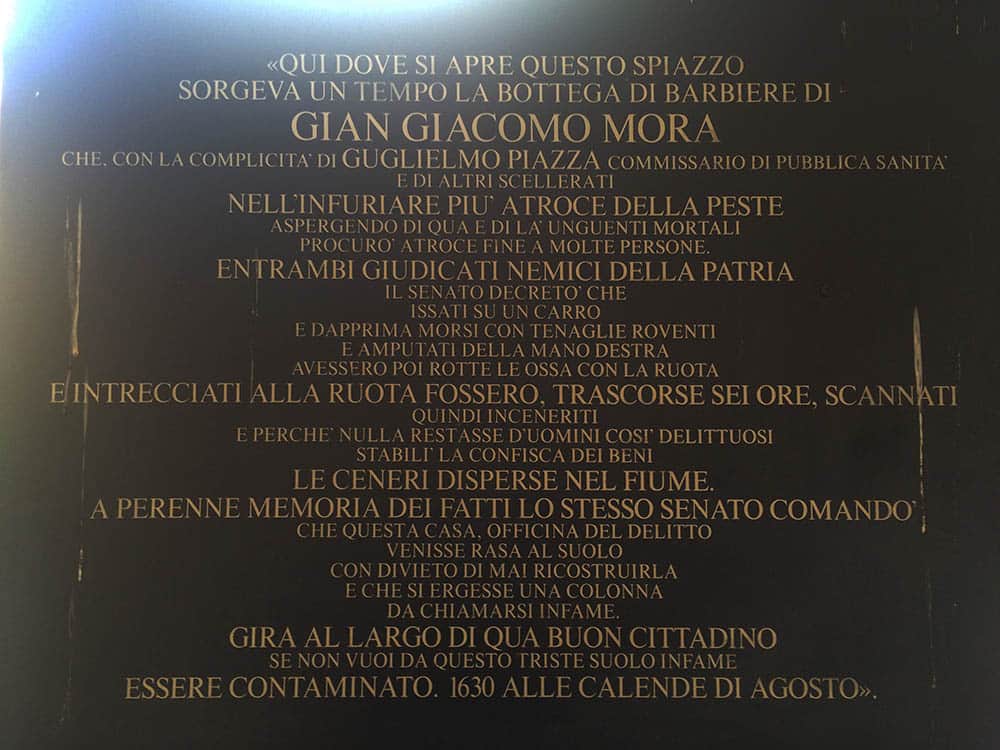
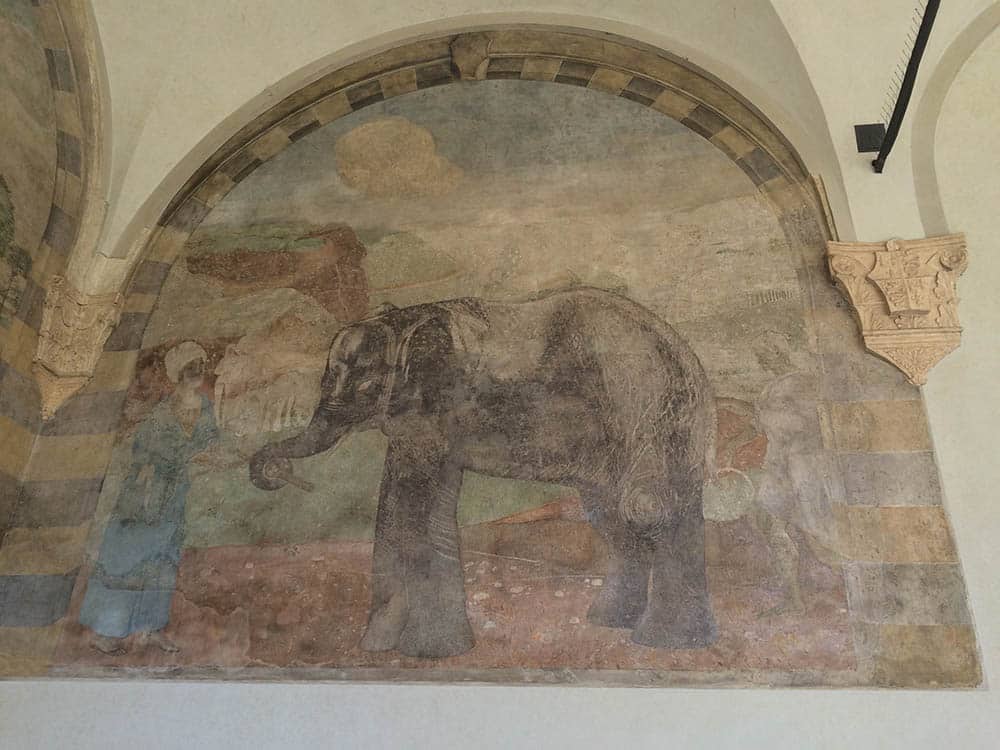
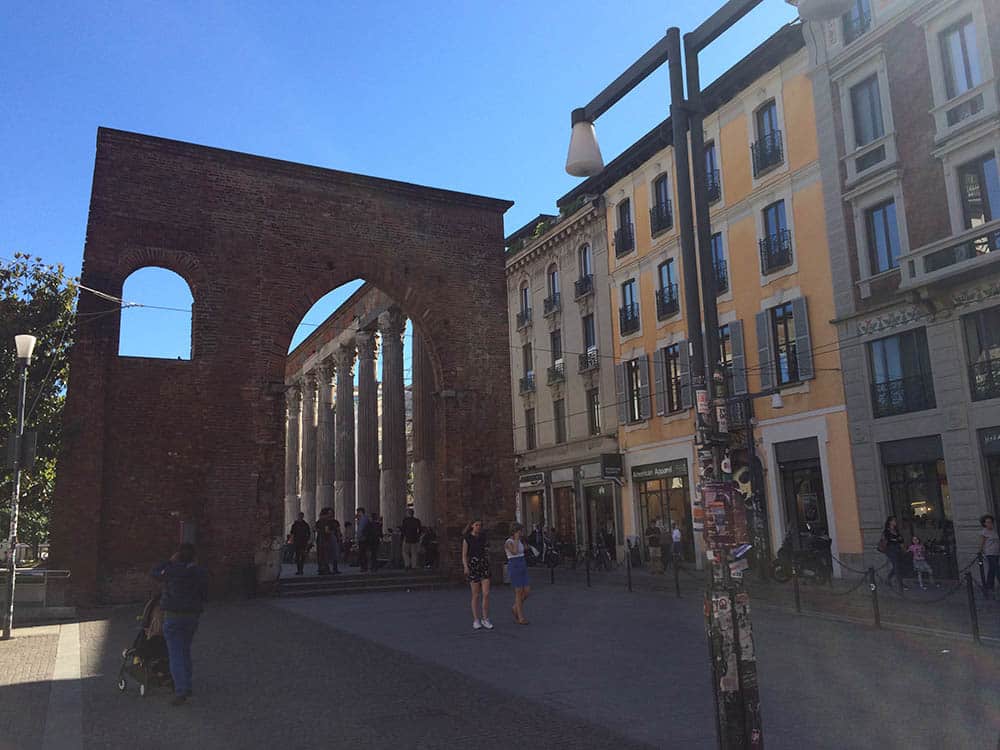
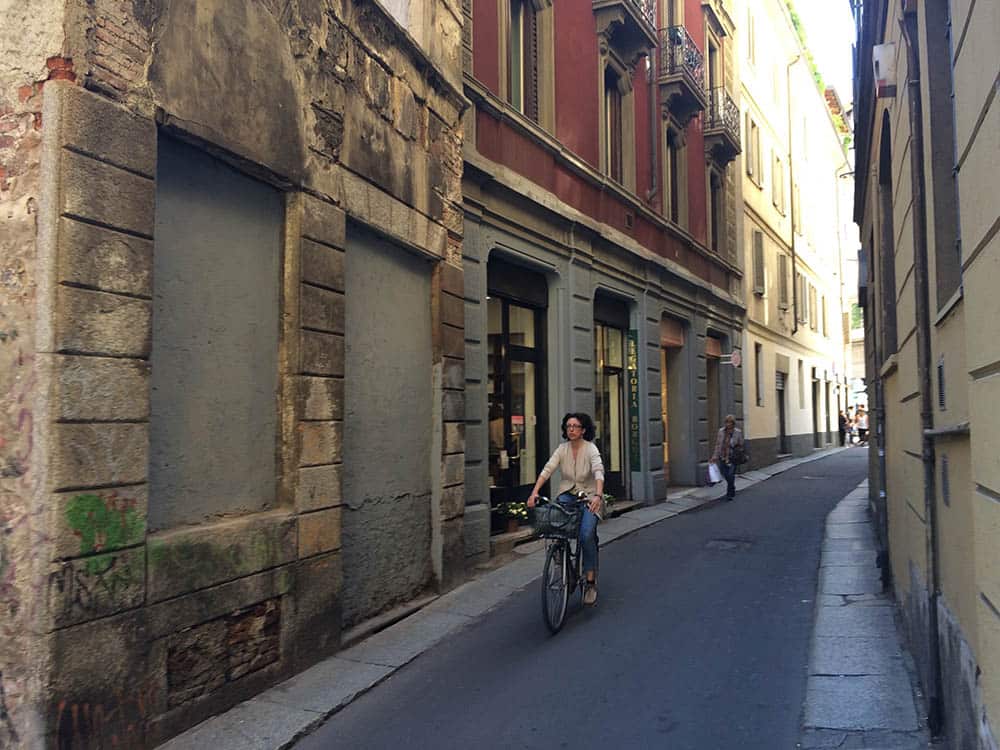
3 Comments
Stan Bush
December 8, 2021So, This is one of my favorite stories as well. Not for entertainment, but because of how it clearly shows how power corrupts
He was doomed from the first unfounded rumor.
Nazim
December 9, 2021So true Stan! Thanks for checking it out!
Boo
April 15, 2023Thank you for this! I am reading The Betrothed and the reference to Giangiacomo Mora was interesting to me. I wasn’t sure if he was a historical character so I really appreciate learning more about his story and the aftermath. Tragic but an insightful story about fear, suspicion and scapegoating.